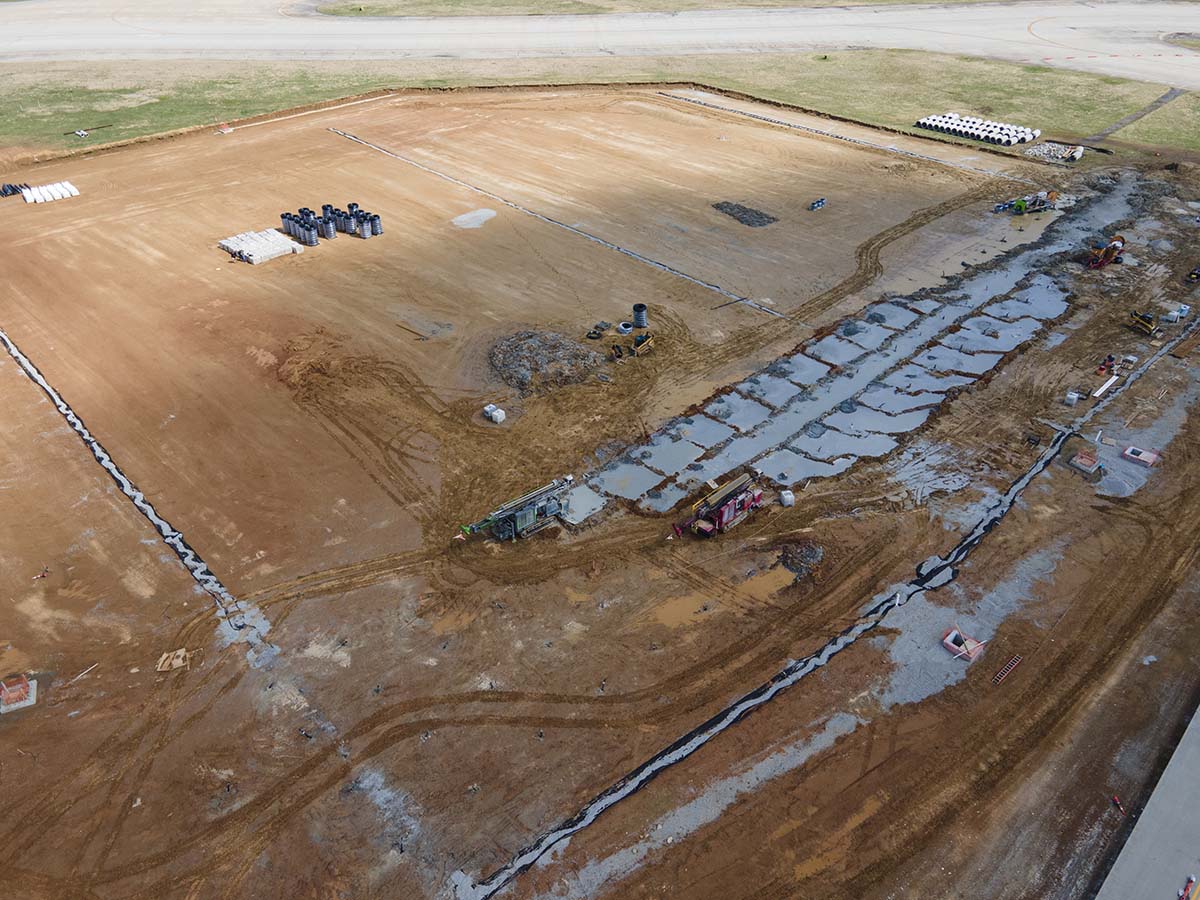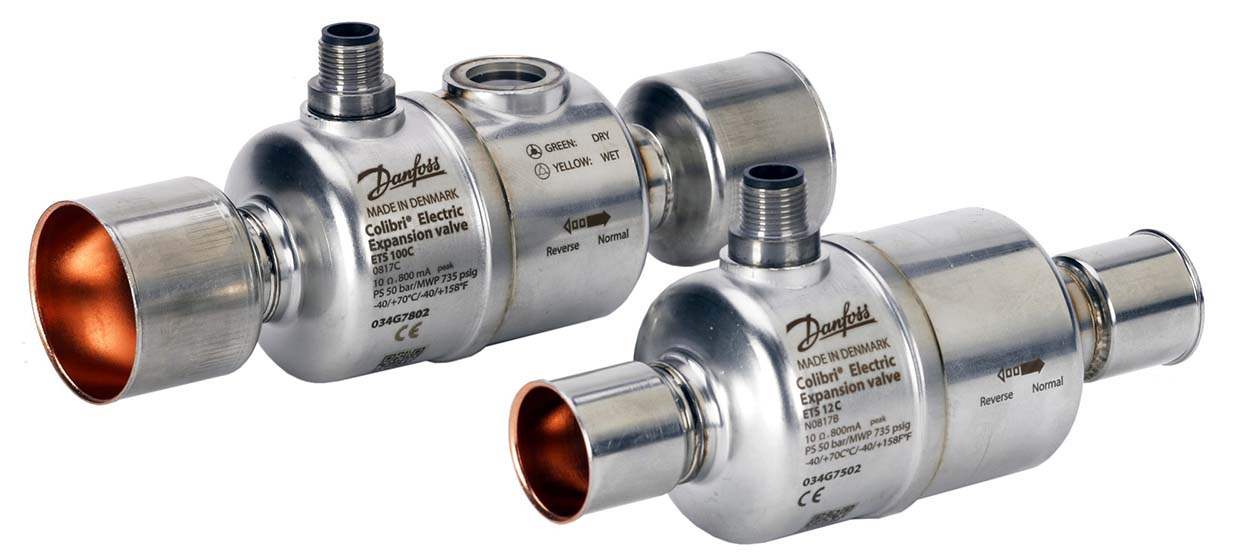Prompted by energy-savings and carbon-reduction goals and helped by technological advances, building owners and managers are increasingly asking for sustainable buildings with high-efficiency HVAC systems — and developers are delivering.
From an airport in Louisville, Kentucky, to a recreation center on Vancouver Island in Canada, buildings open for public use are seeing large-scale sustainability projects.
Here’s a look at two such projects.
Louisville Airport Going Geothermal
A goal of cutting energy consumption by 45% is driving a $400 million renovation of the Muhammad Ali International Airport — named for the boxing legend, a hometown hero — in Louisville, Kentucky.
The project includes an ongoing $21 million ground-source geothermal project, which will provide heating and cooling for the 400,000-square-foot Jerry E. Abramson Terminal, the airport’s main building. The system has 648 wells, each of them 500 feet deep, and is the largest geothermal field at any U.S. airport. The airport received a $10 million grant from the Federal Aviation Administration to help pay for the work.

THE BIG DIG: A site at the Muhammad Ali International Airport in Louisville, Kentucky, prepped for construction of the largest geothermal well field at a U.S. airport — 648 wells, each of them 500 feet deep. Construction began in the spring of 2022, and the system is expected to be partially online this summer. (Courtesy of CMTA)
The Abramson Terminal is about 30 years old and is currently heated and cooled with more traditional equipment, including a 1,200-ton water-chiller system and three natural gas-fired boilers. The new system will pump water from the geothermal wells to WaterFurnace single- and multizone water-source heat pumps, located in mechanical rooms, to provide heating and cooling throughout the terminal, said Dave Mayer, a partner at CMTA, the contracting and consulting engineering firm overseeing the project.
The system will also include a 200-ton heat recovery chiller, Mayer said.
According to CMTA, the system will reduce carbon emissions by an estimated 80% and save $400,000 yearly in heating and cooling costs. The system is estimated to reduce the building’s energy usage intensity (EUI) from 217 to 120.
The well field, the company said, is sized for a future terminal expansion of 100,000 square feet.
Mayer said the airport’s growth presented a challenge — the need to move a cooling tower tied to the existing HVAC system — that ultimately led to the decision to go geothermal.
"This challenge gave us the idea to look at other options, and the geothermal option looked very promising," Mayer said. "It would provide the airport with room for future expansion, resiliency, and redundancy."
More challenges, Mayer said, were posed by the distance between the existing HVAC plant and the proposed well field.
"The airport helped guide us through these logistical challenges with their knowledge of airfield operations," he said.
The well field was drilled at installed by Chesapeake Geosystems Inc.
The airport’s efficiency measures will also include generators to provide backup electricity to the terminal, garage, and administration building in case of power failures, plus battery storage capabilities that will allow the airport to take advantage of lower-priced electricity during off-peak times and save an estimated $93,000 a year, Mayer said.
regional sales manager, Danfoss
A Heat Pump in British Columbia
When officials in Colwood, Vancouver Island, British Columbia, decided to cut the city’s carbon emissions to meet sustainability goals set in early 2020, they looked to Polar Engineering to help them do so at the city’s Juan de Fuca Recreation Centre (JDF).
JDF, which opened in 1972, is an 85,000 square-foot building that includes a pool, weight room, ice arena, and multisport complex, all previously heated by a gas-fueled boiler system. Polar Engineering, based in Victoria, B.C., came up with a water-source heat-pump system designed to tie into the existing boiler loop and take over much of the boiler system’s heating load.
The new system, built and installed by Fraser Valley Refrigeration, includes Danfoss products such as solenoid, isolation, and electronic expansion valves (EEV) to precisely and quickly control the flow of refrigerant, and a uses a refrigerant — R-513 — with low toxicity and low GWP. The JDF heat pump is the first system in Canada to use R-513.

KEY COMPONENTS: Danfoss components, including its Colibri electronic expansion valves, were used in the new heat pump system at the Juan de Fuca Recreation Center in Colwood, British Columbia, on Vancouver Island. The system has greatly reduced the use of natural gas for building heat and domestic hot water. (Courtesy of Danfoss)
The new heat pump, which was installed and switched on in late 2021, uses waste heat from the JDF ice-making system and has exceeded expectations, all but eliminating the boiler’s system’s gas consumption, said Ian Welle, chief engineer at Polar.
"Even on the coldest days, the boiler is barely running,” Welle said.
In addition to providing space heating, the heat pump system heats water for use in the building, heats the floor under the ice rink to limit floor heaving (the underfloor system is also used as a thermal battery, storing heat for times when the ice plant is down or can’t provide enough heat), and heats the rink’s snowmelt pit, Welle said.
The system is capable of providing building cooling during the warmer months, though not yet configured to do so, and plans call for it to be integrated into JDF’s new air handing units, Welle said.
The heat pump system is saving JDF about $22,000 a year in energy costs and about 284 tons a year in carbon emissions.
“As greener solutions are being legislated and decarbonization becomes an industry driver, we are now seeing a growing focus on heat pump systems in the North American market,” said Adam Anderson, regional sales manager for industrial refrigeration at Danfoss.








